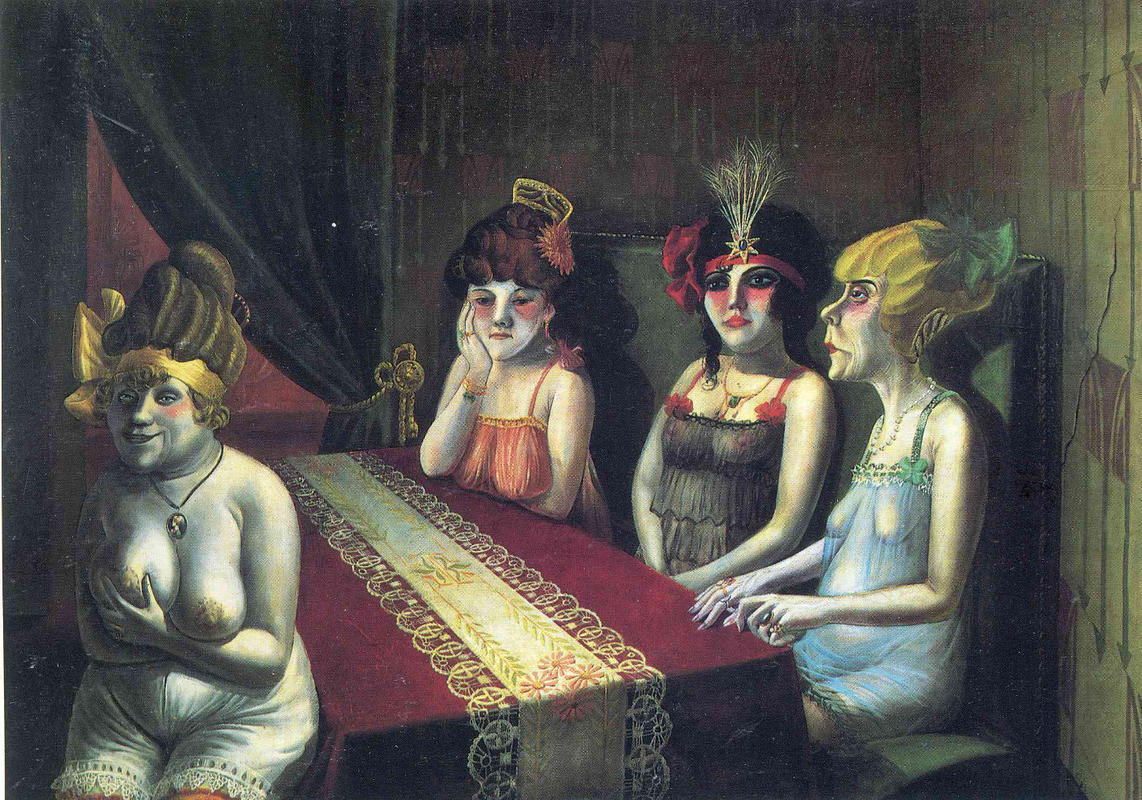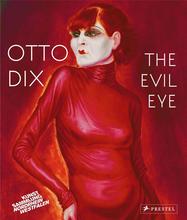More about The Salon I
- All
- Info
- Shop

Sr. Contributor
Otto Dix asks us to picture this: Berlin, 1921. World War I is over, and the Weimar Republic reigns.
Germany is defeated, and her economy crippled by the vengeful victors. Money isn’t worth the paper on which it is printed. The hopeful bring wheelbarrows full of bills and watch from breadlines as the prices rise before their very eyes. The practical use money to light their stoves in the freezing winter and resort to bartering or crime to stay alive.
The young are infected with an apocalyptic sense of nihilism, and chase hedonistic delights as they flirt with impending extinction. Many believe they are living in the end times, and in a way they are right…within the next 25 years the baroque metropolises of Germany will be incinerated, and over 10% of the population, as many as 9 million German people, will be dead.
Two cultural phenomena emerge out of this cesspool of despair: Nazism and the Cabaret. The latter is the glittering underbelly of Berlin society, like a layer of greasepaint and rhinestones caked over a dying pig. Here, every imaginable vice is available. Queer sexuality, alcoholism, drug addiction and promiscuity are celebrated. These are the very same people the Nazis hope to sterilize. Indeed, the German people are seduced by Hitler’s promise of a return to the comforts of bourgeois morality, and Nazi mass hysteria will spell the end of the Golden age of the Cabaret.
But for now, the good times are in full swing…for those who can afford them. For the lucky, the pretty and the talented, the Cabaret life is one of seamy glamour. A few, like Marlene Dietrich, become underground superstars. The working ladies of Otto Dix’s Salon are not the lucky ones. Life out of the spotlight is one of depraved prostitution. One can only imagine the twisted roads that brought them to this back booth where they await their clients.
The two in front appear to be senior members of the group, veterans worn down by years on the mattress. The girl in the middle seems the choicest specimen, a vampy “new woman” imitating the dark hair and eyeliner of screen star Theda Bara. The girl in back also seems fresh…perhaps a downtrodden housewife trying to feed her family, or an impoverished war widow.
They are tragic, grotesque, beaten down by life and experience. Yet Dix paints them with exceptional character. There is an air of good humor and camaraderie between them that is very human. Dix, who was noted for painting satirical portraits of Germany’s intellectual elite, seems to share a warmer rapport with these used-up floozies than with those luxuriating celebrities. Life was no cabaret for these four friends, and Dix appreciated them for their hardships.













